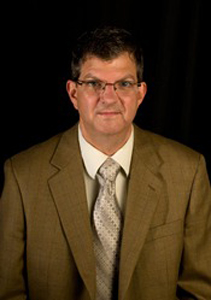Program Information
A Novel Edge Gradient Distance Metric for Automated Evaluation of Deformable Image Registration Quality
J Ford*, A Gautam, J Williamson, Virginia Commonwealth University, Richmond, VA
TU-C-141-12 Tuesday 10:30AM - 12:30PM Room: 141Purpose: To develop and test a new registration quality metric, based on the distance between image edges, for evaluation of deformable image registration algorithms without the need for manually placed landmarks.
Methods: A 2D Canny filter is used to create binary gradient images from registered grayscale input images that are to be compared. In each slice, a small subregion (10x10 pixels) of one image is translated relative to the other. The translational distance that maximizes overlap of edges in the subregion is the local edge gradient distance to agreement (EGDTA); repeating over all subregions on every slice provides an EGDTA map. The method was applied to pelvic CT images in 3 patients. For each patient, one CT (the planning CT) was registered to each of three daily CTs using three deformable image registration algorithms: Grayscale-driven (G), Contour-driven (C), and Grayscale+Contour-driven (G+C). C and G+C use manually drawn bladder, prostate and rectum contours on both planning and treatment images to drive the registration. EGDTA maps were created for each of the 27 registrations. Mean EGDTA values in concentric ring ROIs close to and far away from the pelvic organs were compared.
Results: Both C and G+C had lower EGDTA values (better registration quality) close to the pelvic organs. Both G and G+C showed much better performance in the regions distant from the pelvic organs compared to contour-only driven (C). G+C registration exhibited lowest EGDTA values (highest registration quality) throughout the image.
Conclusion: The edge distance registration quality metric provides the expected dependence on registration type and ROI location, and shows potential as an automated means of comparing deformable image registration algorithms.
Funding Support, Disclosures, and Conflict of Interest: Supported by NCI Grant P01 CA 116602
Contact Email:


